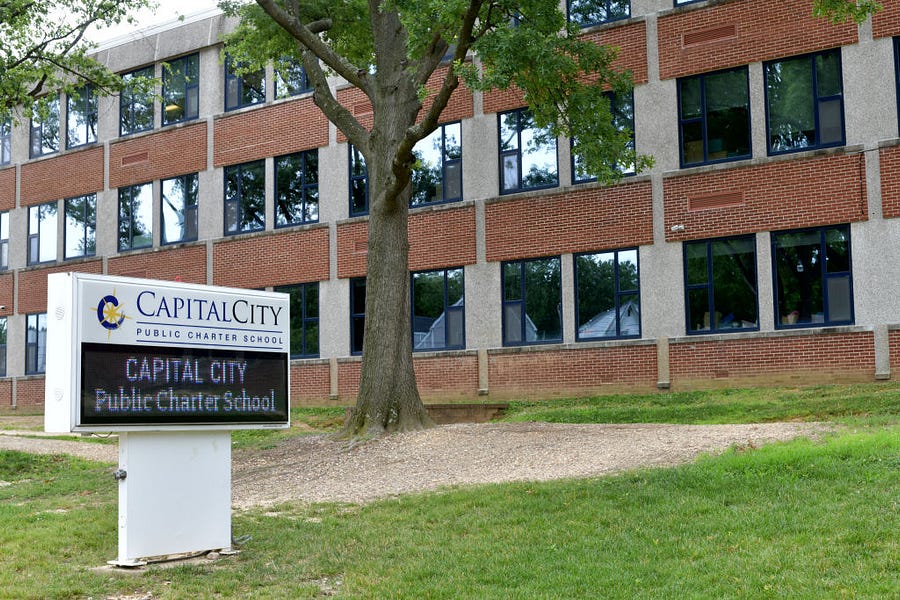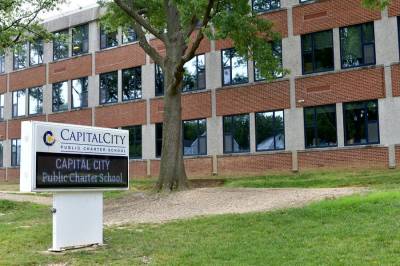In mid-March, the Biden administration declared war on charter schools. In an announcement that blindsided leading charter school advocates, the Department of Education proposed a raft of new regulations on the $440 million federal Charter School Program (CSP)—all designed to bring the boisterous, popular charter school sector to heel.
The new rules would require charter schools seeking CSP funds to prove that they’d be “racially and socio-economically diverse,” show that they wouldn’t step on the toes of local district schools, and agree to file a ream of documents anytime they deal with a for-profit contractor, which the U.S. Department of Education will define at whim.
We’ll return to the wonky particulars in a moment. But, more prosaically, this is nuts. Charter schooling may be the signal bipartisan triumph of contemporary school reform. The first charter law was enacted by Minnesota in 1991, allowing the state to designate entities that could issue performance-based “charters” to new public schools. This simple innovation shattered the school district monopoly while retaining the broad contours of public education. This had obvious appeal to GOP and Democratic reformers alike. President Bill Clinton signed the nation’s first federal charter school bill in a California charter school. For Clinton and later Obama, charter schooling was a way to show that they were willing to stand up for frustrated kids and families against powerful teacher unions.
In 2016, even as Hillary Clinton walked back much of the Clinton-Obama education agenda, she offered some (carefully parsed) praise for charters. Indeed, embracing charters was perhaps the most effective strategy Democrats have used in recent decades to make the case that, when it comes to schooling, they’re pragmatic centrists and not just tax-and-spend captives of the teacher unions.
And the evidence is pretty clear that charter schools have, broadly speaking, been the most successful education reform of the past 30 years. Today, more than 3 million students attend more than 7,000 charter schools. In some communities, tens of thousands of families who came up empty in charter admissions lotteries are on waitlists. The appeal is obvious, especially for families trapped in dismal, mismanaged schools.
In 2021, Harvard University’s Paul Peterson and M. Danish Shakeel found that charter students were making academic gains in reading and math at a substantially faster rate than their district peers on the National Assessment of Educational Progress. The gains were especially large among black students and those from low-income households. Meanwhile, the School Choice Demonstration Project at the University of Arkansas last year compared the cost-effectiveness of charter schools and district schools in seven cities and found that charters delivered 35 percent more reading and math learning for each dollar spent.
The reasons for the success of charter schools aren’t hard to fathom. While the particulars vary depending on a given state’s charter legislation, charters have much more discretion when it comes to hiring, teacher pay, school calendar, curriculum, and much else. Charters need to be “authorized” by state-designated entities and their renewal is contingent on outcomes, meaning there’s both front-end quality control and the ability to pull the plug on crummy schools. And, perhaps most importantly, charters stay in business only if they attract families. Unlike district schools, their survival depends on families choosing to attend.
Yet the Biden administration launched this attack on charters just as the nation emerges from a pandemic in which charters were widely thought to have served kids more adeptly than district schools. The announcement blindsided leading charter officials, who were struck by how abrupt, secretive, and aggressive it was. Even some administration-friendly, charter school Dems have been murmuring, “Wait, what?!” Unfortunately, these critics won’t have much opportunity to share their concerns, as the Biden administration has opted for an expedited comment process designed to speed things along quietly.
So, back to these new regulations.
The Biden administration would require that charter schools prove more seats are physically “needed” locally, without regard to whether existing seats are in schools where parents want to send their kids. Its “community impact” stipulation would require charters to document that their presence wouldn’t adversely impact local district schools. Umm. If local district schools are doing a lousy job, opening a good charter school should affect them adversely. That’s kind of the point. As University of Arkansas scholar (and former school board member) Bob Maranto puts it, “This is like letting General Motors veto where Honda can sell cars.”
The dictate that schools serve a “diverse” population would have similarly perverse effects. Many charter schools are created expressly to serve a specific student population that’s been failed by local district schools. Take the Dr. Howard Fuller Collegiate Academy in Milwaukee, which serves 320 low-income students—most of whom are African-American—and boasts a 100 percent college acceptance rate. Schools like that would be in the administration’s crosshairs. That’s bizarre. As Nina Rees, head of the National Alliance for Public Charter Schools, points out “The proposed rules and regulations would disproportionately impact single-site, rural, Black, Brown, and Native charter school leaders.”
The for-profit reporting mandate could mean that everything from school lunches to tutoring programs could create enough paperwork to require a full-time staffer. That the regulations are not entirely clear on what “for-profit” contractor includes makes things worse (though observers expect the administration to define such contractors expansively). It goes without saying, of course, that traditional district schools, which spend billions a year purchasing food and supplies from vendors like Tyson, Pearson, and Kraft, are subject to no such reporting requirement.
Given that charter schools receive only about three-quarters of the funding of traditional district schools, the consequences of restricting CSP access are profound, doubly so because the commingling of funds amplifies the impact of federal strings. And the paperwork burdens matter. Previous research has suggested that the charter school application process can require upward of 2,000 hours, a crushing burden for independent aspiring charter operators (disproportionately black and Latino) who lack the professional staff of the major charter networks.
The politics here are as puzzling as the policy is maddening. The Biden administration has already given its base several pounds of flesh on education: It fought (albeit unsuccessfully) for universal pre-K and “free” college, successfully nabbed another $130 billion in emergency federal COVID aid for schools, promoted the 1619 Project, bashed Republicans for statehouse school policies, and gave teacher unions a back-door say over the CDC’s school guidance. Biden and Secretary of Education Miguel Cardona have also taken exquisite care never to criticize teacher unions—even as unions fought to keep major school systems closed last spring, and as they’ve staged walkouts this month, shutting down schools in cities like Minneapolis and Sacramento yet again. Why Biden’s team would now decide to side with its base against pro-charter Democrats, on an issue that’s important to few other than the charter school community, is difficult to fathom.
Keep in mind that charter schools are largely an urban phenomenon, offering a reprieve to families trapped in big-spending but low-performing schools in blue cities. That means an outsized share of the families affected by attacks on charter schools live in heavily Democratic communities. Thus, it may not be much of a surprise that, while white progressives have turned on charter schooling with a vengeance, charters poll incredibly well with core Democratic constituencies. In 2019, even before the dislocations of the pandemic, Democrats for Education Reform reported that black Democratic voters favored charter schools by a 58-31 margin. The spread was 52-30 among Hispanics. But white Democrats opposed charters overwhelmingly, 26-62.
At a time when the Biden administration is eyeballing a potential November bloodbath, you’d think that it would want to avoid picking unnecessary fights or alienating key constituencies. And you’d certainly think, after two-plus years of disrupted learning, frustrated parents, and massive learning loss, that it would have more important things to do than seek to undo the nation’s most successful school reform.
Frederick M. Hess is director of education policy studies at the American Enterprise Institute and serves on the board of the National Association of Charter School Authorizers. Hayley Sanon is a research assistant at AEI.






Please note that we at The Dispatch hold ourselves, our work, and our commenters to a higher standard than other places on the internet. We welcome comments that foster genuine debate or discussion—including comments critical of us or our work—but responses that include ad hominem attacks on fellow Dispatch members or are intended to stoke fear and anger may be moderated.
With your membership, you only have the ability to comment on The Morning Dispatch articles. Consider upgrading to join the conversation everywhere.